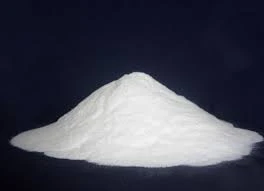Understanding Hydroxypropyl Methylcellulose (HPMC) Applications and Benefits
Hydroxypropyl methylcellulose (HPMC) is a versatile cellulose ether that has gained prominence in various industries due to its unique properties and benefits. This semi-synthetic polymer is derived from natural cellulose, which is modified to enhance its solubility and functionality. HPMC is widely recognized for its thickening, emulsifying, and film-forming properties, making it a valuable ingredient in a multitude of applications.
Chemical Structure and Properties
HPMC is created by the etherification of cellulose, whereby hydroxypropyl and methyl groups are introduced into the cellulose structure. This modification results in an increased solubility in water and organic solvents, which is a significant advantage in various formulations. The degree of substitution of methyl and hydroxypropyl groups in HPMC can be tailored, allowing manufacturers to create products with specific characteristics tailored to particular applications.
HPMC is typically white to off-white powder that is odorless and tasteless. It is stable to heat, acids, and bases, which makes it suitable for formulations that require exposure to different environmental conditions. It is non-toxic and biodegradable, making it an environmentally friendly choice for many applications.
Applications of HPMC
1. Pharmaceutical Industry HPMC is widely used as an excipient in drug formulations. Its film-forming capabilities make it ideal for creating controlled-release drug delivery systems. HPMC can form gels upon contact with water, which can help in controlling the release rate of active pharmaceutical ingredients (APIs). Additionally, it acts as a binder in tablets and provides viscosity to liquid formulations, improving the bioavailability of drugs.
2. Food Industry In food applications, HPMC serves as a thickening agent, stabilizer, and emulsifier. It is utilized in various products, including sauces, salad dressings, and ice creams, where it helps improve texture and consistency. HPMC can replace fat in reduced-calorie food products, providing creaminess without the added calories. Its ability to retain moisture also enhances the shelf life of baked goods.
3. Cosmetics and Personal Care HPMC is a common ingredient in cosmetic formulations, including lotions, creams, and gels. It functions as a thickener and stabilizer, helping to maintain the uniformity and spreadability of products. Its film-forming properties allow it to create a moisture-retentive barrier on the skin, enhancing hydration and texture.
hydroxypropyl methylcellulose hpmc

4. Construction Industry In the construction sector, HPMC is widely used in cement-based formulations, such as tile adhesives, plasters, and grouts. It improves the workability and adhesion of these materials, allowing for better application and performance. HPMC also enhances water retention, which is crucial for maintaining the strength and durability of construction materials.
5. Agricultural Applications HPMC is utilized in the formulation of pesticides, herbicides, and fertilizers. It acts as a binder in granulated products and improves the dispersion and stability of liquid formulations. Its ability to form gels can help in delivering active ingredients more effectively, ensuring better penetration and efficacy.
Benefits of HPMC
One of the main benefits of HPMC is its excellent safety profile. It is non-toxic and allergen-free, making it suitable for use in food and pharmaceutical products. Additionally, its versatility in formulations means it can be adapted to meet various requirements across industries.
HPMC is also compatible with a wide range of other ingredients, which allows formulators to create complex and effective products. Its ability to enhance the physical properties of formulations, such as viscosity and stability, contributes to improved product performance and consumer satisfaction.
Moreover, HPMC is environmentally friendly, as it is derived from natural cellulose and is biodegradable. This characteristic aligns with the growing consumer demand for sustainable and eco-friendly products.
Conclusion
Hydroxypropyl methylcellulose (HPMC) stands out as a crucial ingredient across different industries due to its unique properties and versatility. Its applications in pharmaceuticals, food, cosmetics, construction, and agriculture illustrate its broad utility and importance. As research and technology continue to advance, the potential for HPMC to contribute to innovative solutions in formulations remains promising. The increasing emphasis on sustainability and safety will likely drive further interest and development of HPMC-based products in the future.
-
The Application and Significance of Construction RdpNewsMay.19,2025
-
Industrial Grade HpmcNewsMay.19,2025
-
Building Coating Adhesive Building Coating Adhesive HpmcNewsMay.19,2025
-
Application Of Hpmc For Detergent For Detergent In DetergentsNewsMay.19,2025
-
Application Of Hpmc Cellulose In Cement-Based MaterialsNewsMay.19,2025
-
Application Of High Quality Hpmc For Construction In The Field Of ConstructionNewsMay.19,2025




